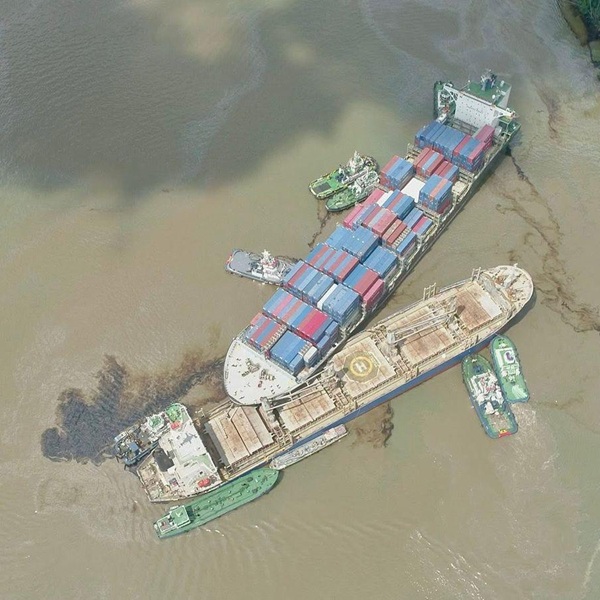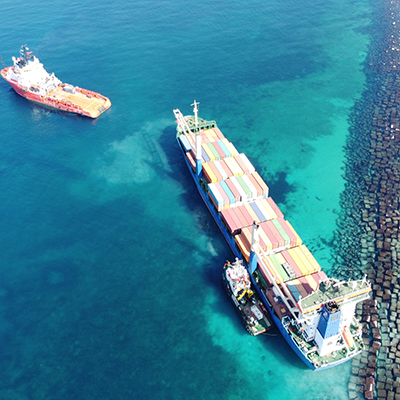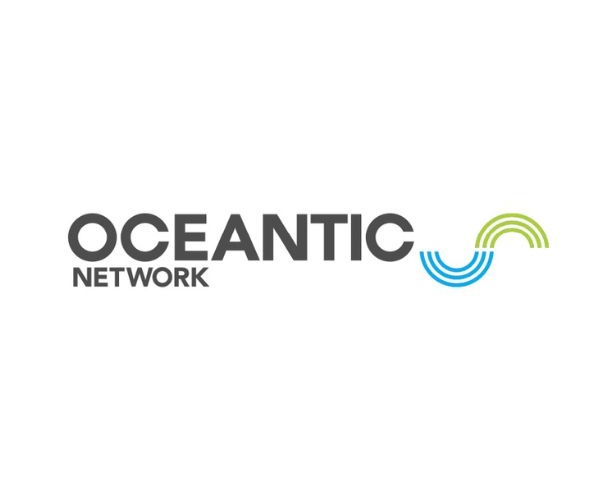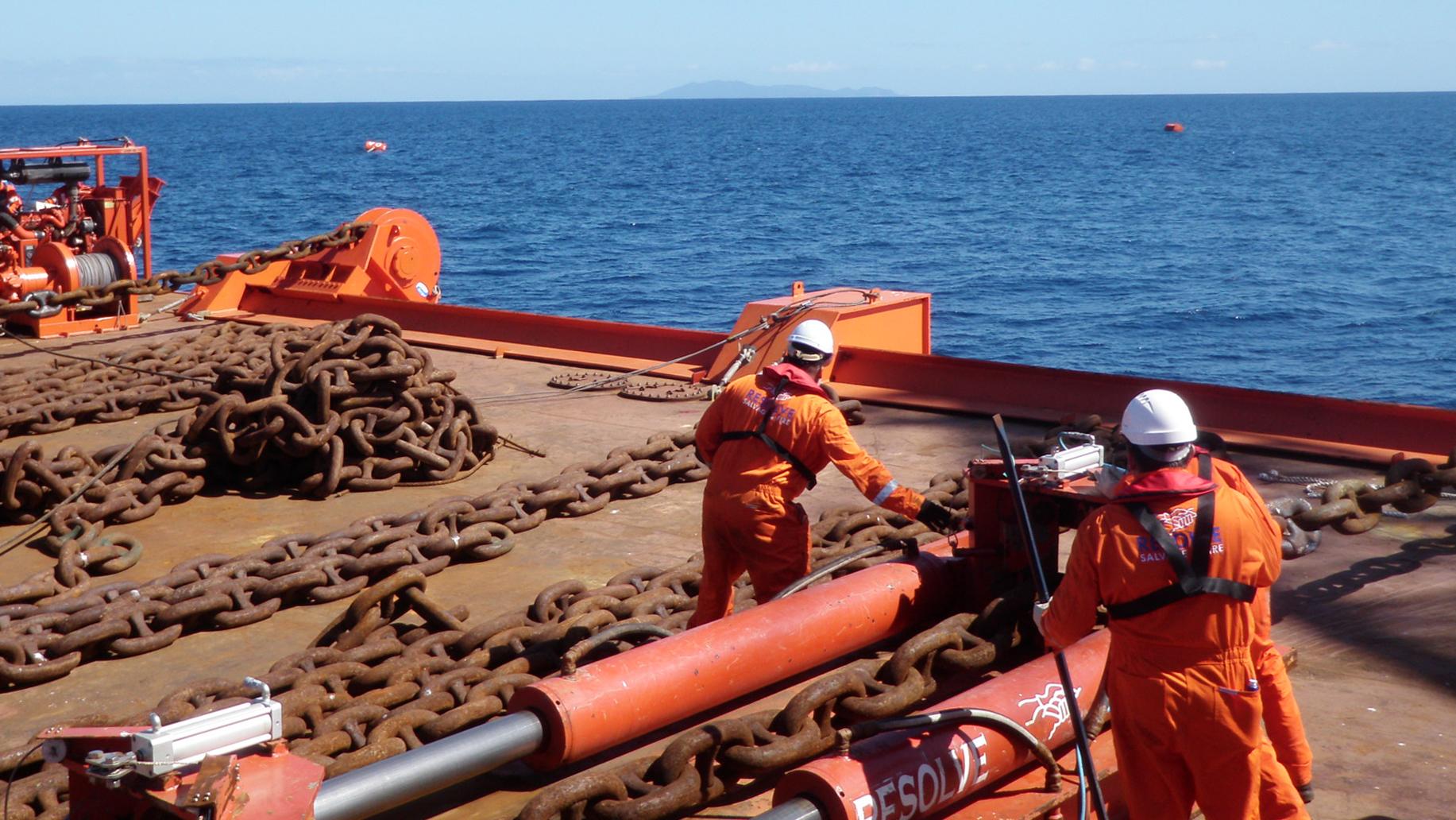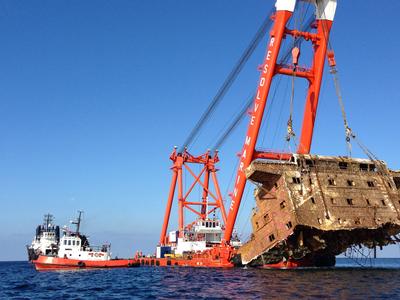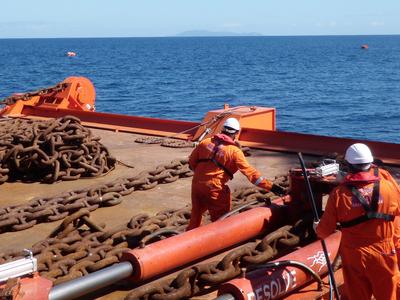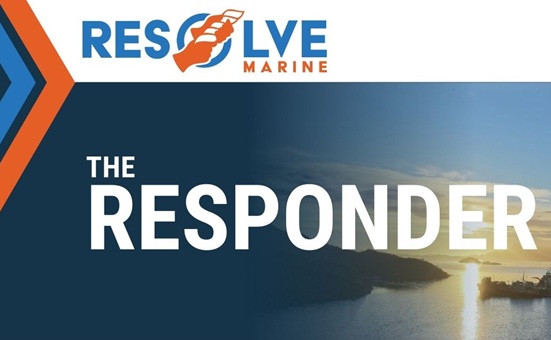
CASE STUDY: Rena
Tauranga | New Zealand
Resolve Marine was contracted for the bow section's wreck removal, later expanding to cut and remove the bow and clear over 5,400 tons of additional steel and debris from the sea floor. Salvage operations included hazardous material recovery and deep oil removal at depths down to 165 feet.
In the initial phase, Resolve Marine utilized a unique technical process involving a helicopter and specialist cutting team to remove bow sections, lifting and recovering them to a nearby barge, eventually bringing the wreckage ashore for scrapping. As the bow section reduced, Resolve Marine mobilized the RMG -280 salvage barge, Resolve Commander tug, and later the RMG 500 shear leg to New Zealand from the Singapore operations center.
The RMG 500 was deployed for two priority lifts. The first operation involved cutting and lifting the house section of the Rena, chain-cutting sections from the wreckage at a depth of 120 feet, then hoisting the 350 metric ton piece to the surface using heavy chain pullers. The second operation cut and lifted the port side of the hull, providing access to the cargo hold for debris removal. This piece was cut into three 200 metric ton sections and cleared.
The final salvage operation focused on debris removal. Utilizing two 280-ton crawler cranes, the RMG 1000 deck barge cleared the sea floor of salvage debris. The cranes employed hydraulic grabs and electromagnets to recover debris weighing less than 20 metric tons. When larger structures needed recovery, divers cut steel sections free and rigged them directly to the crane for lifting from the sea floor.
A distinctive aspect of the salvage operation was the recovery of nurdles in 80 feet of water, addressing current conditions before they reached the beach. The initial attempt involved a steel structure with pumps and holding tanks engineered to sit over the container, but adverse weather conditions rendered it unstable. The salvage master developed a method to create bags from fishing nets with zip-tie closures, allowing divers to direct the nurdles. This method expedited the recovery of pollutants in days rather than weeks.
Resolve Marine successfully removed 1,300 tons of steel from the bow section, cleared over 3,400 tons of debris and scattered steel structures on the reef due to the vessel's breakage and sinking, and eliminated 1,000 tons of steel from the house accommodation and port side shell.

